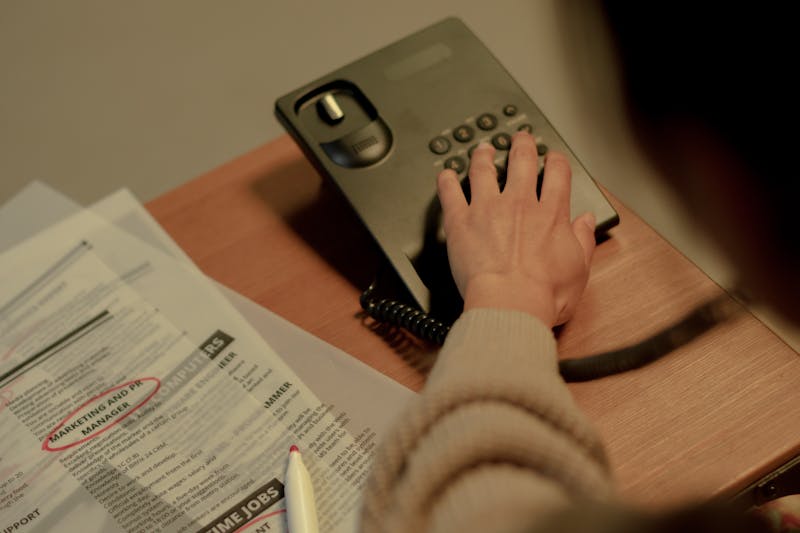When top candidates read your job post, they’re making a fast judgment:
“Do I want to work here?”
Unfortunately, many companies unintentionally answer that question with a resounding “No.” Poorly written or outdated job descriptions repel great talent not because the role is bad, but because the way it’s presented fails to connect. In a competitive market where candidates are evaluating you just as much as you’re evaluating them, every word matters.
Let’s break down why your job descriptions might be scaring away high-quality applicants and how to fix them.
Key Takeaways
- Vague or cliché language turns off discerning candidates.
- Overly long or unrealistic requirements filter out qualified people.
- Ignoring inclusive language can alienate diverse applicants.
- Culture buzzwords without substance come off as disingenuous.
- Great job descriptions sell the opportunity as much as they describe it.
1. You’re Using Generic, Overused Phrases
“Rockstar.” “Ninja.” “Fast-paced environment.”
These tired buzzwords have lost their meaning—and great candidates see right through them. They signal lazy writing and a lack of real insight into the role.
What to do instead:
Use clear, specific language that describes what the candidate will actually do. For example:
- Replace “self-starter” with “You’ll work independently to manage projects from planning to execution.”
- Replace “team player” with “You’ll collaborate closely with designers and product managers in weekly sprints.”
2. Your Requirements Are Unrealistic
Requiring 10 years of experience for a mid-level role? Asking for mastery of 5+ unrelated tools? Listing “nice-to-haves” as mandatory?
Overly rigid or inflated requirements don’t impress senior candidates—they frustrate them. Worse, they deter diverse talent, especially women, who are less likely to apply unless they meet every listed requirement.
What to do instead:
- Focus on outcomes over checkboxes.
- Separate must-haves from nice-to-haves clearly.
- Use phrases like “You don’t need to meet every qualification to apply.”
3. You’re Not Writing for a Human Audience
Many job descriptions read like a compliance document. Others sound like a corporate press release.
If your tone is robotic or overly formal, it creates emotional distance—something no top candidate wants from a potential employer.
What to do instead:
- Use a conversational, welcoming tone.
- Speak directly to the candidate (e.g., “You’ll lead…” instead of “The ideal candidate will…”).
- Show some personality without crossing into gimmicky territory.
4. You’re Not Being Inclusive
Subtle language cues can make your job description feel unwelcoming—especially to underrepresented groups.
Terms like “digital native,” “manpower,” or “recent grad” carry unintended bias. So do masculine-coded words like “dominant,” “competitive,” or “aggressive.”
What to do instead:
- Run your job descriptions through an inclusivity checker (e.g., Gender Decoder).
- Use inclusive language like “they” instead of “he/she.”
- Avoid ageist or ableist phrases like “high-energy” or “walk into a room and own it.”

5. You’re Not Selling the Opportunity
Too many job posts focus only on what the company wants. But top candidates want to know:
“What’s in it for me?”
That doesn’t just mean salary and benefits it includes growth, mentorship, impact, and team culture.
What to do instead:
- Add a section called “Why You’ll Love This Role.”
- Mention opportunities for learning, flexibility, mission, or tech stack.
- Share one or two authentic quotes from team members.
6. You’re Failing the First Impression Test
A confusing structure or a wall of text can drive candidates away in seconds. If they have to scroll endlessly just to understand the basics, they’re gone.
What to do instead:
- Structure your post for easy skimming:
- Overview
- Responsibilities
- Requirements
- Perks
- About the team/company
- Use bullet points, headers, and plain language.
- Keep it concise: aim for under 750 words.
7. You’re Not Tailoring for the Role or Audience
Using a one-size-fits-all template across roles? Tech candidates don’t care about the same things as marketers. Senior-level folks need a different tone than early-career applicants.
What to do instead:
- Customize job descriptions based on the team and role seniority.
- Collaborate with hiring managers to write role-specific content.
- Ask team members: “Why did you take this role?” and include that insight.
Checklist: How to Write Job Descriptions That Attract Great Candidates
- Use clear, role-specific language
- Avoid jargon and clichés
- Separate must-haves from nice-to-haves
- Speak directly to the candidate
- Use inclusive, bias-free language
- Emphasize value to the candidate
- Format for easy reading
- Review for tone, clarity, and appeal
Final Thoughts
Job descriptions are your first (and sometimes only) chance to make a strong impression. Treat them like marketing assets not HR paperwork.
Great candidates have options. If your job description doesn’t speak to them, connect with their values, or respect their time, they’ll move on. But if you write with intention and authenticity, the right people will lean in and apply.
FAQ
How long should a job description be?
Aim for 500–750 words. Long enough to be detailed, short enough to keep attention.
How often should we update job description templates?
At least every 6–12 months, or whenever the role or team changes significantly.
Should I include salary in job descriptions?
Yes if possible. Transparency attracts trust and improves applicant quality.
What tools help improve job description quality?
- Textio – writing enhancement for inclusive language
- Gender Decoder – checks gender-coded terms
- Grammarly – tone and clarity support
Also Read:
[How to Cut Time-to-Hire by 75% (Without Sacrificing Quality)]
[The Ethics of Automated Hiring: A Practical Guide]




